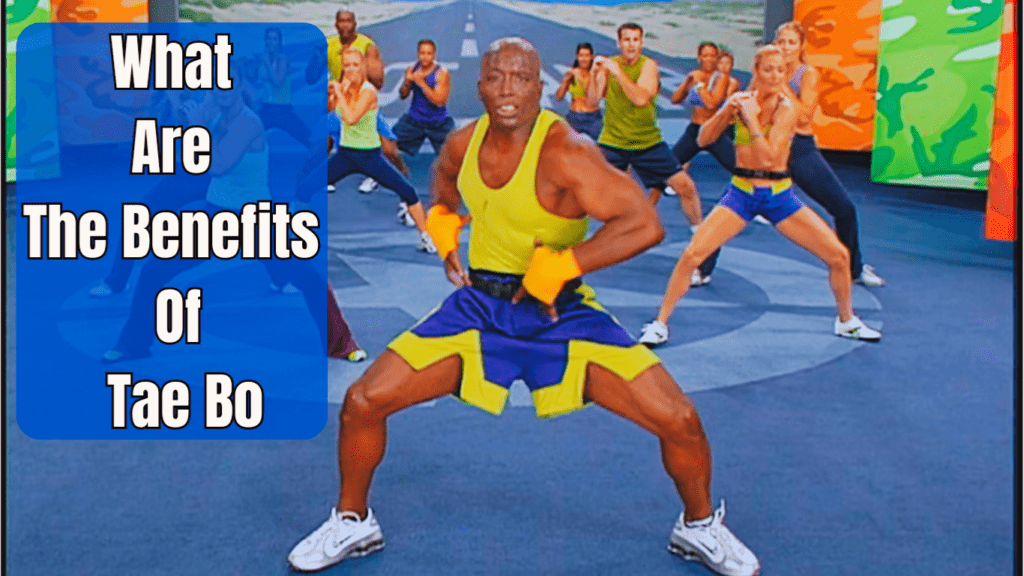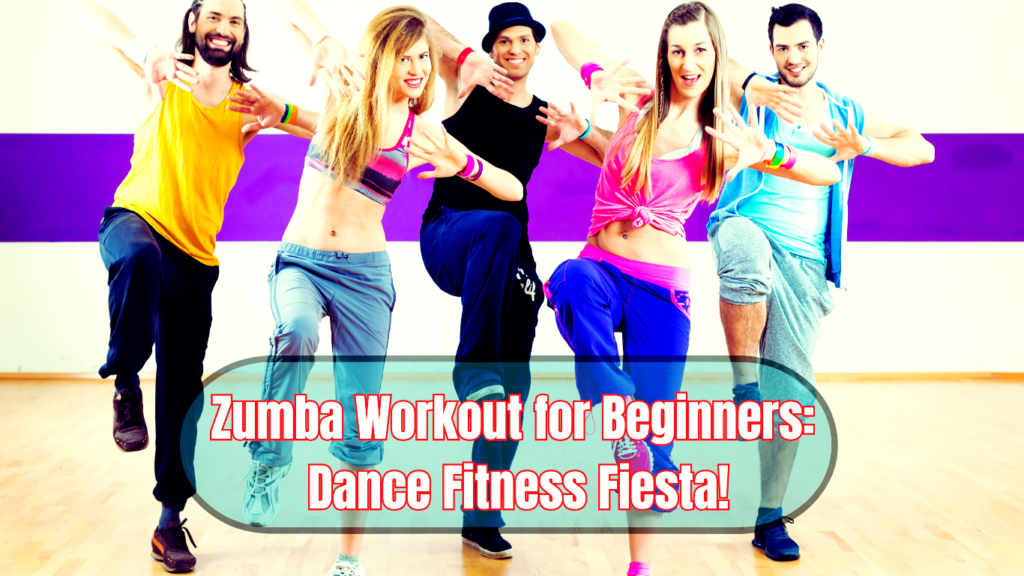The Benefits of Tae Bo – From Origins to Enriching Your Lifestyle!
It is time to delve into the benefits of Tae Bo, a dynamic fitness regimen that blends martial arts and cardio for a comprehensive workout.
In the vibrant world of fitness, where workouts and trends come and go, there’s one name that has stood the test of time and continues to captivate enthusiasts – Tae Bo. The rhythmic blend of martial arts and high-intensity aerobics has not only become a household name but has also etched its place as a go-to workout for those seeking a dynamic and engaging fitness experience.

Let’s take a trip down memory lane to uncover the roots of Tae Bo. The mastermind behind this fitness sensation is none other than Billy Blanks, a martial artist and fitness instructor extraordinaire. In the late 1980s, Blanks set out to create a workout that seamlessly combined the power and discipline of martial arts with the cardiovascular benefits of aerobics.
Subscribe And Get Our Free E-Book:Unlocking The Power Of Nutrition-Supplements, Substitutes, and Superfoods!
Driven by a passion to make fitness accessible to all, Blanks designed Tae Bo with the vision of providing a total body workout that could be enjoyed by people of all fitness levels. The name “Tae Bo” itself is a clever fusion of two martial arts: “Tae” from Tae Kwon Do and “Bo” from boxing, encapsulating the essence of the workout.
As Tae Bo made its debut on the fitness scene, its popularity skyrocketed, and for good reason. Blanks’ charismatic and motivational teaching style, combined with the invigorating beats of music, made Tae Bo more than just a workout – it became an experience. People were drawn to the dynamic and energetic nature of the routine, making it a refreshing departure from traditional exercise regimens.

One of the key factors that contributed to Tae Bo’s widespread acclaim was its versatility. Tae Bo was not just a set of repetitive movements; it was a dynamic fusion of punches, kicks, and cardiovascular exercises that engaged multiple muscle groups simultaneously. This holistic approach appealed to individuals looking for a well-rounded workout that could improve strength, flexibility, and endurance, all in one go.
The aerobic component of Tae Bo not only elevated heart rates but also helped participants burn calories, making it an effective tool for weight management. The incorporation of martial arts techniques not only added an element of excitement but also contributed to improved coordination, balance, and core strength.
What sets Tae Bo apart is its emphasis on empowerment and self-defense. While participants engage in the energetic routines, they are inadvertently learning basic martial arts moves that could be valuable in real-life situations. This unique blend of fitness and self-defense adds an extra layer of motivation for individuals seeking a practical and empowering workout.
The popularity of Tae Bo continued to surge as it found its way into fitness studios, home workout videos, and even mainstream media. Celebrities embraced it, further fueling its widespread adoption. The infectious energy of Tae Bo made it not just a workout but a cultural phenomenon, creating a community of enthusiasts who shared a common goal – to have fun while getting fit.
So, why do people love Tae Bo? The answer lies in its ability to make fitness enjoyable. Tae Bo transcends the monotony of traditional workouts, infusing an element of joy and exhilaration. The combination of martial arts, dance-like movements, and upbeat music creates an environment where participants can lose themselves in the rhythm, forgetting that they are engaged in a challenging workout.
In addition to the physical benefits, Tae Bo also offers mental and emotional rewards. The sense of accomplishment that comes with mastering a new move, coupled with the stress-relieving effects of physical activity, makes Tae Bo a holistic experience for both the body and the mind.
In conclusion, the journey of Tae Bo from its inception to its current status as a fitness icon is a testament to its effectiveness and universal appeal. Billy Blanks’ vision to make fitness enjoyable and accessible has resonated with millions, creating a fitness legacy that continues to inspire and invigorate. As we delve deeper into the benefits of Tae Bo in the upcoming sections, we’ll uncover the transformative impact it can have on your physical health, mental well-being, and overall lifestyle. So, get ready to discover the full spectrum of benefits that make Tae Bo more than just a workout – it’s a lifestyle.
Tae Bo Basics Workout 24min Video
Comparison to Top 10 Fitness Classes
In the diverse landscape of fitness classes, each offering a unique approach to achieving health and wellness, Tae Bo emerges as a standout contender, weaving martial arts and aerobics into a dynamic workout experience. Let’s embark on a journey comparing Tae Bo with some of the most popular fitness classes, exploring the benefits of Tae Bo and why it might just be the fitness revelation you’ve been searching for.
| Fitness Activity | Average Calories Burned per Hour | Average Heart Rate (bpm) | Muscle Groups Engaged |
|---|---|---|---|
| Tae Bo | 400 – 800 | 140 – 160 | Legs (quadriceps, hamstrings, calves), Core (abdominals, obliques), Arms (biceps, triceps), Shoulders, Back |
| Zumba | 350 – 650 | 120 – 140 | Legs (quadriceps, hamstrings, calves), Core (abdominals, obliques), Arms (biceps, triceps), Shoulders, Back |
| Yoga (Vinyasa Flow) | 200 – 550 | 100 – 120 | Core (abdominals, obliques), Legs (quadriceps, hamstrings, calves), Arms (biceps, triceps), Shoulders, Back |
| Spinning (High Intensity) | 500 – 800 | 140 – 170 | Legs (quadriceps, hamstrings, calves), Glutes, Core (abdominals, obliques), Cardiovascular system |
| Pilates | 250 – 450 | 100 – 120 | Core (abdominals, obliques), Legs (quadriceps, hamstrings), Glutes, Back, Arms (biceps, triceps), Shoulders |
| CrossFit | 500 – 800 | 160 – 180 | Full body (including legs, core, arms, shoulders, back), Cardiovascular system |
| Boot Camp (HIIT) | 500 – 700 | 150 – 170 | Full body (including legs, core, arms, shoulders, back), Cardiovascular system |
| Barre | 300 – 500 | 110 – 130 | Core (abdominals, obliques), Legs (quadriceps, hamstrings, calves), Glutes, Arms (biceps, triceps), Shoulders, Back |
| HIIT | 450 – 900 | 160 – 190 | Full body (including legs, core, arms, shoulders, back), Cardiovascular system |
| Aerial Yoga | 300 – 500 | 110 – 130 | Core (abdominals, obliques), Legs (quadriceps, hamstrings, calves), Glutes, Arms (biceps, triceps), Shoulders, Back |
| Dance Cardio | 400 – 600 | 130 – 150 | Legs (quadriceps, hamstrings, calves), Core (abdominals, obliques), Arms (biceps, triceps), Shoulders, Back |
Note: Calorie burn ranges and average heart rates are approximate and may vary based on factors such as intensity, duration, individual metabolism, and body composition. Muscle groups engaged are generalized and may vary depending on specific exercises within each activity.
- Zumba: Zumba, known for its infectious dance moves set to rhythmic beats, has gained a massive following for its fun and lively atmosphere. However, when comparing it to Tae Bo, the benefits of Tae Bo shine in its incorporation of martial arts elements. Tae Bo not only offers a cardio dance experience but also integrates powerful kicks and punches, engaging more muscle groups for a full-body workout.Benefits of Tae Bo:
- Total body engagement with martial arts elements.Enhanced calorie burn with dynamic movements.
- Potential for higher impact, which may not be suitable for everyone.
- Yoga: Yoga, renowned for its focus on flexibility, balance, and mindfulness, provides a calming and centering experience. Tae Bo, on the other hand, introduces a high-intensity component, offering a contrast to the serene nature of yoga. Tae Bo’s dynamic movements elevate the heart rate, promoting cardiovascular health.Benefits of Tae Bo:
- Cardiovascular benefits with energetic routines.Incorporates strength and endurance training.
- Limited emphasis on deep stretching and meditation.
- Spinning: Spinning classes are a popular choice for those seeking intense cardiovascular workouts on stationary bikes. Tae Bo, with its dynamic and explosive movements, offers a diverse workout that engages both upper and lower body muscles, providing a more comprehensive fitness experience.Benefits of Tae Bo:
- Engages upper and lower body simultaneously.Incorporates martial arts for enhanced strength.
- Less focus on sustained endurance like spinning.
- Pilates: Pilates focuses on core strength, flexibility, and controlled movements. While Pilates excels in core conditioning, Tae Bo complements this by incorporating martial arts kicks and punches, contributing to improved overall strength and conditioning.Benefits of Tae Bo:
- Full-body workout with an emphasis on core engagement.Integrates cardiovascular elements for added benefits.
- May not provide the same level of focused core work as Pilates.
- CrossFit: Known for its intense, varied workouts, CrossFit aims to improve overall fitness. Tae Bo brings an element of diversity with its martial arts-inspired routines, offering an alternative approach to achieving cardiovascular fitness and muscle endurance.Benefits of Tae Bo:
- Diversity in workouts with martial arts elements.Suitable for all fitness levels.
- Less emphasis on heavy lifting and strength training.
- Boot Camp: Boot camp classes focus on high-intensity interval training (HIIT) for full-body conditioning. Tae Bo shares the intensity but stands out with its unique blend of martial arts, providing an extra layer of skill development and self-defense techniques.Benefits of Tae Bo:
- High-intensity cardio with added martial arts benefits.Enhances coordination and agility.
- Potential for higher impact, which may not suit everyone.
- Barre: Barre classes center around isometric movements, targeting specific muscle groups for toning and sculpting. Tae Bo, while incorporating toning elements, elevates the workout with dynamic kicks and punches, offering a more spirited and energizing experience.Benefits of Tae Bo:
- Dynamic movements for a spirited workout.
- Full-body engagement with toning elements.
- Less emphasis on isometric holds for muscle toning.
- HIIT (High-Intensity Interval Training): HIIT workouts involve short bursts of intense exercise followed by rest. Tae Bo seamlessly integrates HIIT principles with martial arts, providing a structured yet exhilarating workout that boosts metabolism and burns calories.Benefits of Tae Bo:
- HIIT principles for efficient calorie burning.
- Martial arts elements enhance overall conditioning.
- May be too intense for beginners or those with joint concerns.
- Aerial Yoga: Aerial yoga combines traditional yoga with acrobatic movements using a suspended hammock. Tae Bo differs by bringing the workout to the ground, incorporating dynamic movements that cater to a wider audience without the need for specialized equipment.Benefits of Tae Bo:
- Accessible to a broader audience without specialized equipment.
- Engages core strength and cardiovascular health.
- Does not include the unique aerial component.
- Dance Cardio: Dance cardio classes focus on rhythmic dance routines for cardiovascular fitness. Tae Bo incorporates dance-like movements but goes further by adding martial arts, making it a more versatile and engaging option for those seeking a cardio dance experience.Benefits of Tae Bo:
- Integrates dance-like movements with martial arts.
- Full-body engagement for a well-rounded workout.
- Potential for higher impact, which may not suit everyone.
In the grand spectrum of fitness classes, Tae Bo stands as a dynamic and inclusive option, offering a blend of martial arts, aerobics, and empowerment. While each fitness class has its strengths and weaknesses, Tae Bo’s unique combination of elements makes it a compelling choice for those seeking an invigorating, full-body workout that transcends the boundaries of conventional fitness. So, whether you’re a seasoned fitness enthusiast or a newcomer on the wellness journey, Tae Bo beckons with the promise of joy, vitality, and a pathway to a healthier, more energetic you.
Demystifying The Benefits of Tae Bo and Answering Common Questions
Embarking on the journey of Tae Bo raises common questions about its effectiveness and how it fits into our fitness routines. Let’s delve into these inquiries and demystify the world of Tae Bo.
So, does Tae Bo build muscle? Absolutely! It’s not just a cardio workout; Tae Bo incorporates martial arts techniques, engaging various muscle groups simultaneously. The repetitive punches and kicks, combined with resistance from the air and your body weight, contribute to building lean muscle. This fusion of strength and cardio makes Tae Bo a comprehensive tool for overall fitness.
Now, let’s address the persistent concern about losing belly fat. Can Tae Bo help in that department? Absolutely, and here’s how. Tae Bo’s high-intensity nature elevates your heart rate, leading to increased calorie burn. Dynamic movements targeting the core work to engage and strengthen abdominal muscles. This not only burns calories during the workout but also stimulates your body to continue burning calories post-exercise, aiding in overall fat loss, including that stubborn belly fat.
Curious about the duration of a Tae Bo class? Typically, a session lasts between 45 minutes to an hour. This timeframe ensures a well-rounded experience encompassing warm-up, the main workout with a variety of punches and kicks, and a cooldown. It’s a balanced approach that addresses cardiovascular health, muscle toning, and flexibility.

Now, let’s talk numbers. How many calories can you expect to burn during a Tae Bo workout? Well, that varies based on factors like intensity, fitness levels, and body composition. On average, a Tae Bo session can torch anywhere from 400 to 800 calories per hour. The dynamic, high-energy nature of the workout ensures efficient calorie expenditure, making it a potent choice for weight management.
Wondering how often you should lace up your workout shoes for Tae Bo? For optimal results, engaging in Tae Bo sessions 3 to 4 times a week is a good starting point. This frequency allows your body to adapt to the workout, providing a balance between challenging your limits and allowing for necessary recovery.
Now, can Tae Bo be used for self-defense? While Tae Bo incorporates martial arts elements, it’s essential to clarify that it’s primarily a fitness workout. While you may learn basic self-defense moves, Tae Bo is not a substitute for dedicated self-defense training.
Incorporating Tae Bo into your routine is fantastic, but what else can you do to see the best results? Combining Tae Bo with a well-rounded approach to fitness is key. Consider incorporating strength training exercises to complement the cardiovascular benefits of Tae Bo. Don’t forget about a balanced diet, ensuring you’re fueling your body with the nutrients it needs for both energy and recovery.
Lastly, let’s talk progress. How do you gauge your improvement over time? Progress in Tae Bo, like any fitness journey, is a gradual process. Pay attention to increased stamina, improved form, and the ability to perform more advanced movements. Take note of how your body feels and the positive changes in energy levels, flexibility, and overall well-being. Celebrate these victories – they are the markers of your journey towards a healthier, fitter you.


